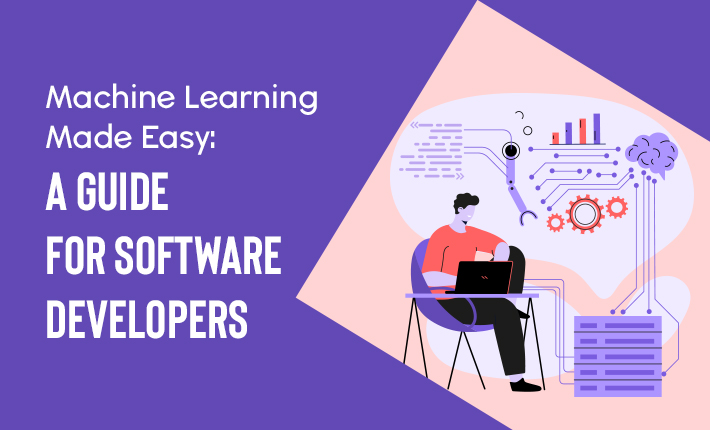Machine learning has revolutionized various industries, from healthcare to finance, by enabling computers to learn patterns and make predictions from data. As a software developer, understanding the basics of machine learning can open up new possibilities for building intelligent applications. In this guide, we will demystify machine learning and provide a step-by-step approach to help software developers get started with this exciting field.
What is Machine Learning?
Before diving into the technical details, it's crucial to grasp the concept of machine learning. This section explains the fundamental idea behind machine learning, where computers learn from data without being explicitly programmed. It covers key terminologies like training data, features, labels, and models. Additionally, it highlights the distinction between supervised and unsupervised learning.
Machine Learning Workflow
To make the process more manageable, this section presents a high-level overview of the machine learning workflow. It outlines the essential steps, including data collection, preprocessing, model selection, training, evaluation, and deployment. Each step's significance is discussed, emphasizing the need for careful consideration and iterative refinement throughout the process.
Preparing Data for Machine Learning
Data preparation plays a crucial role in the success of a machine learning model. This section covers various data preprocessing techniques, such as handling missing values, handling categorical variables, feature scaling, and feature engineering. Practical examples and code snippets are provided to illustrate how to implement these techniques using popular Python libraries.
Choosing and Training a Model
Selecting an appropriate machine learning model is a critical decision. This section provides an overview of different types of models, such as decision trees, support vector machines, and neural networks, along with their strengths and weaknesses. It also explains the concept of model training and evaluation, discussing techniques like cross-validation and hyperparameter tuning.
Evaluating Model Performance
Once the model is trained, evaluating its performance is essential to determine its effectiveness. This section introduces evaluation metrics such as accuracy, precision, recall, and F1 score. It also addresses common challenges like overfitting and underfitting, discussing techniques like regularization and ensemble methods to improve model performance.
Deploying Machine Learning Models
The ultimate goal of machine learning is to deploy models in real-world applications. This section explores different deployment options, from standalone applications to web services and APIs. It covers considerations like model persistence, scalability, and monitoring.
Machine Learning Tools and Libraries
To make machine learning accessible to software developers, a vast ecosystem of tools and libraries has emerged. This section provides an overview of popular libraries, such as scikit-learn, TensorFlow, and PyTorch, along with their key features and use cases. It also highlights resources for further learning, including online courses, books, and research papers.
Conclusion
Machine learning offers exciting opportunities for software developers to build intelligent applications. This guide has provided a foundation for understanding the key concepts and workflow of machine learning. By following the step-by-step approach outlined here, software developers can start exploring and leveraging the power of machine learning to create innovative and intelligent solutions. Remember, practice and experimentation are key to mastering this rapidly evolving field. So, roll up your sleeves, dive into the code, and embrace the fascinating world of machine learning!














Post Comments